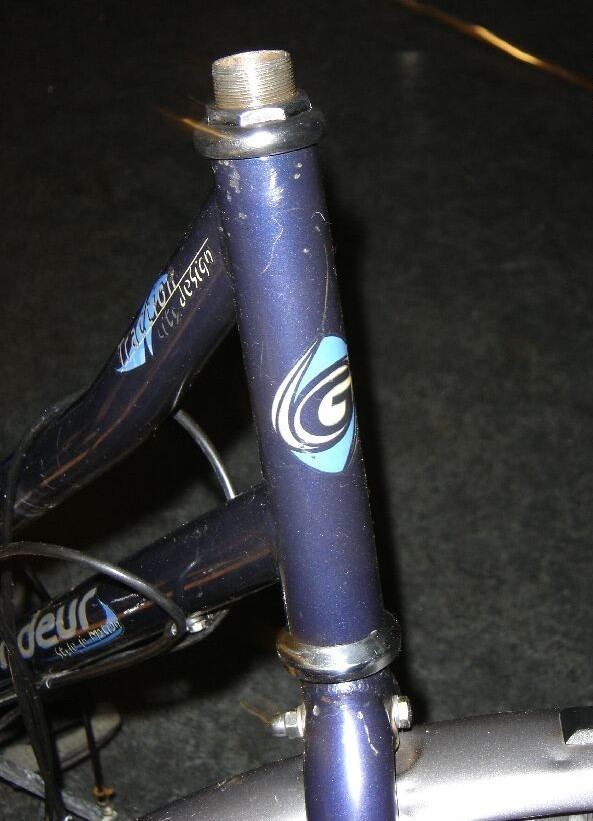 | ||
The head tube is the part of a cycle's tubular frame within which the front fork steer tube is mounted. On a motorcycle, the "head tube" is normally called the steering head. On bicycles the manufacturer's brand located on the head tube is known as a head badge.
Contents
Bearings
The head tube holds the bearings which allow the front fork steer tube to pivot freely.
Caster angle
The steering axis angle, also called caster angle, is the angle that the head tube and hence the steering axis makes with the horizontal or vertical, depending on convention. The steering axis is the axis about which the steering mechanism (fork, handlebars, front wheel, etc.) pivots.
Head tube diameters
Head tubes can use one of several size standards
The head tube of a bicycle is sometimes designated by the fork steerer column it accepts. This can lead to confusion, since head tube inside diameters are dependent on the headset standard. For example, frames that take one inch (25.4 mm) steerer columns can have three different inside diameters for threaded and threadless headsets (not including integrated-type headsets). The wide variety of integrated and non-standard, proprietary headsets that some frame manufacturers have created (and abandoned in some cases) makes listing all current and past head tube dimensions problematic. The following table includes the most common sizes; nominal head tube diameters are assuming a 0.1-0.2 mm interference fit, which is what most head tube reaming cutters are designed to bore. Adequate press fits are typically between 0.1 and 0.25 mm of interference.
Standard motorcycle head tubes and headsets are sized for a one inch (25.4 mm) diameter fork steerer tube.
